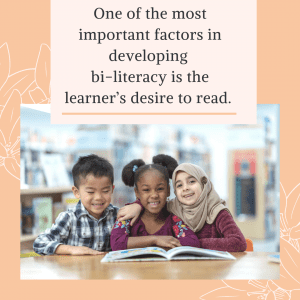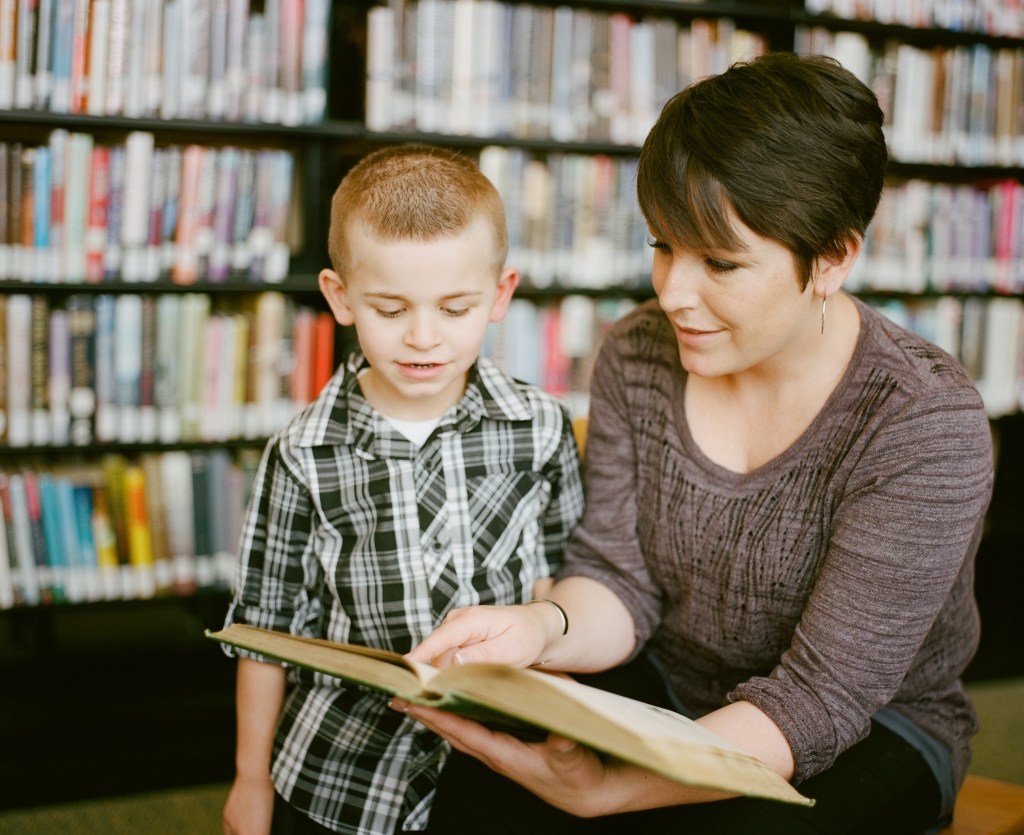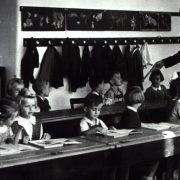Reading with your children in English (or any other language)

A consideration unique to non-French parents living in France is how to teach their children to read in their “other” native language. For Anglophones, there are many bilingual schooling options available, but these may not be practical or affordable. So how do you help develop and maintain reading in both languages at home?
One of the most important factors in developing bi-literacy is the learner’s desire to read. Observing family members reading and providing appealing material will stimulate this desire. We begin reading to and with our children when they are young. We share this pleasure with them as they mature; reading and discussing with them as literature choices become more complicated. If you continue reading to your children when they are able to read by themselves you will continue to improve and develop their vocabulary.
Get Dramatic
If the child is speaking English, French reading skills can usually easily transfer to English. While reading a story with your child, invite her to participate in a reading dialogue with you. For example, ask the child to read a well-known line “The smallest one was…Madeline,” (from Madeline by Bemelmans), “But he was still hungry” (from The Very Hungry Caterpillar by the late great Eric Carle), or a character’s speech like “Who’s been sleeping in MY bed?” or “Grandmother, what big eyes you have!” Ask them to “replay” the text (to reinforce the vocabulary) louder or in a frightened voice.

Focus on a Few Sight Words
There are about 200 common English words that can be mastered by “sight.” These frequently encountered words are not easily “sounded-out” and therefore need to be recognized on sight; for example, “the”, “one”, “through”, and “said” are common words but are phonetically challenging to a new reader. Introduce and reinforce these words in tiny reading doses, for example, by leaving notes to motivate your children to read them.
Keep a white board for drawing and jotting messages to and from your family
- Brush teeth
- Put away clothes. Thank you – from Mom
- Get dressed
(NB. The more challenging word – clothes – is in the middle. This gives context to help them figure it out.)
Progress from simple terms such as “pick up/put away” to “straighten up.” Use simple words like “mom” before “mother.” “Your allowance has been raised,” or “You can eat these cookies for your snack,” might get more attention than “Make your bed,” despite the more complex language. Use familiar vocabulary.

Place Post-It Notes all Over the House
Plaster the toilet wall, their bedroom door and your refrigerator with posters, bumper stickers, silly greeting cards or cartoons with simple short captions. Hide notes in incongruous places (“Smile, my pretty girl” on her bathroom mirror; “Good night, my love” under his pillow).
Write Together
Another way to reinforce reading vocabulary is to sit together at a computer. You type as your child dictates a story or a thank you letter to grandma. Reading is an intermediary step between speaking and writing. While they scan the screen reading their own text to make sure you don’t make mistakes, they will learn reading and spelling.
Show them all the interesting things to read around them
Incite your kids to decipher the English around them. Point out all the languages on cereal packages, the instructions to a game, on billboards. Subscribe to magazines about their favorite hobby that can be casually perused. Advertisements and cartoons may provide opportunities to explain embedded contextual cultural clues. While cooking together, ask them to help read the next ingredient in a recipe. Ask the child to supply captions to vacation photos in an album.

Read Together
You might want to try reading a bedtime story up to a significant moment in the plot, then leave the book on the night table. Your child might continue to read ahead after you turn out the light and tell them to go to sleep. Discuss what you are reading during meals.
You can complete your child’s language acquisition by continuing to enjoy reading together as their own skills develop. Reading is an individual affair but can be shared and reinforced within the family at all ages.
Janine Brimbal
Ms. Brimbal found an early connection to linguistics and non-verbal communication. Love of great literature qualified her as a Title I resource teacher. While clowning around the nation’s capital disguised as a bear or the tap-dancing-Empire-State-Building, she taught drama at the Smithsonian Institution and participated in performing arts educational research and training projects. She used Contact Improvisation to develop Wheelchair Dance with adults, and is proud to have participated in the passing of the Americans With Disabilities Act and directed a project to assist in the integration of children with disabilities.
Fortuitously performing at the Alternative Theatre Festival in Nancy, she found herself in France, and the food convinced her to stay. She directed a local lycée theatre group for 17 years and has published articles on drama and disability in a number of international publications. Currently retired and the mother and grandmother of brilliant researchers, Janine is thrilled to contribute to AAWE in any way.










Leave a Reply
Want to join the discussion?Feel free to contribute!